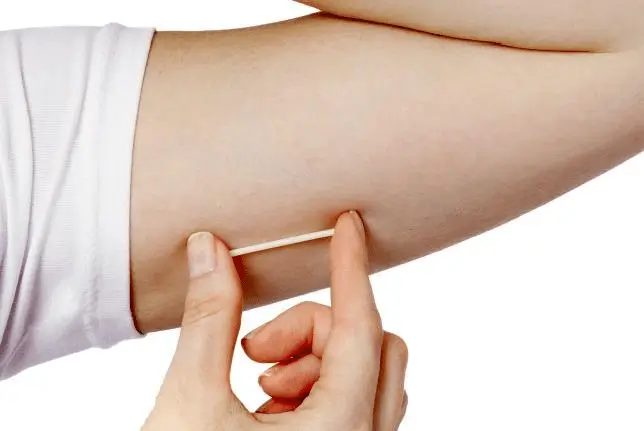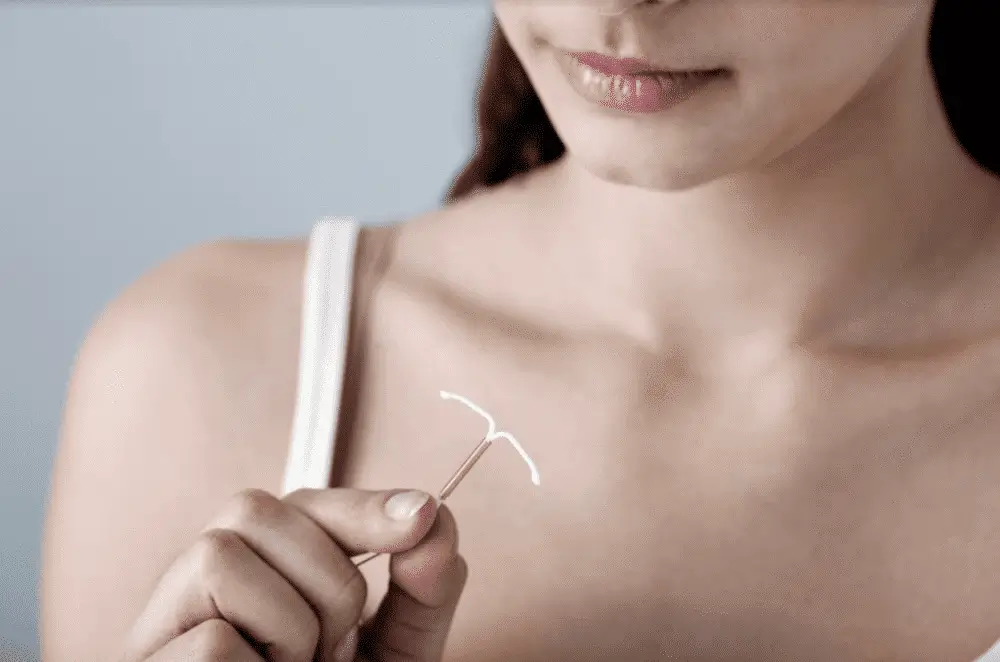Only for Licensed Professionals
Only for Licensed Professionals

Nexplanon vs IUD – Similarities and Differences
David Fuller
Last Updated On: September 16, 2025
Choosing the right birth control can feel overwhelming, especially with so many reliable options available today. For millions of women worldwide, access to effective contraception not only helps prevent unplanned pregnancies but also plays a vital role in supporting reproductive autonomy and overall well-being.
Two of the most trusted choices are Nexplanon and intrauterine devices (IUDs). Nexplanon is a small, flexible implant placed under the skin of the upper arm, while IUDs come in both hormonal and copper-based forms. These methods are known as long-acting reversible contraceptives (LARCs) because they provide highly effective protection that lasts for years, without the need for daily attention.
While both options share the benefit of long-term reliability, they differ in how they work, how they’re placed, and what women may experience while using them. In this article, we’ll take a closer look at Nexplanon vs IUD, exploring their similarities, differences, and key considerations so that patients and providers alike can make confident, informed decisions about which method may be the best fit.
Key Takeaways
- Nexplanon and IUDs are both highly effective long-acting reversible contraceptives, each offering over 99% protection against pregnancy.
- Nexplanon works for up to 3 years, while hormonal IUDs last 3–7 years and copper IUDs up to 10 years, giving patients flexibility based on their long-term needs.
- Side effects differ: Nexplanon often causes irregular bleeding, while copper IUDs may increase period pain, and hormonal IUDs may lead to lighter or absent periods.
- Practical factors—like insertion comfort, hormone sensitivity, and reversibility—play a key role in deciding between the two.
- Consulting with a healthcare provider helps ensure that the chosen method aligns with medical history, lifestyle, and personal preferences.
About: Operating since 2016, Med Supply Solutions is known for being one of the industry’s top and trusted suppliers of cosmetic and viscosupplementation products. If you’re looking to buy Nexplanon online, contact our sales department for more information.

How Nexplanon Works Compared to IUDs

Nexplanon is a small, flexible rod that a healthcare provider places just under the skin of the upper arm. It works by slowly releasing etonogestrel, a type of progestin hormone, into the body. This hormone prevents pregnancy in three ways: it stops ovulation (the release of an egg), thickens the cervical mucus to block sperm, and thins the uterine lining to make implantation less likely. Once inserted, Nexplanon provides continuous protection for up to three years.
By comparison, intrauterine devices (IUDs) are placed inside the uterus. There are two main types: hormonal IUDs, which release levonorgestrel to prevent pregnancy, and copper IUDs, which release copper ions that create a sperm-toxic environment. Both methods prevent fertilization but differ in whether hormones are involved.
For some women, the choice between a hormonal IUD vs Nexplanon comes down to hormone sensitivity. Those who want a hormone-free option may prefer the copper IUD, while others may benefit from the steady, low-dose hormone release of Nexplanon. Providers help tailor these options to fit each woman’s health needs and lifestyle.
Effectiveness of Nexplanon vs IUD in Preventing Pregnancy

When it comes to preventing pregnancy, both Nexplanon and IUDs are among the most effective contraceptives available.
- Nexplanon has a success rate of over 99%, with fewer than one pregnancy per 100 women in a year of use. Because it doesn’t depend on daily or monthly actions, its effectiveness is not reduced by user error, unlike pills or patches.
- IUDs (both hormonal and copper) are also more than 99% effective. Their reliability is consistent as long as a trained professional correctly places the device.
For women seeking reassurance, the Nexplanon vs IUD choice offers peace of mind. Nexplanon protects for up to 3 years, while hormonal IUDs last between 3 and 7 years, and copper IUDs can last up to 10 years. These longer durations may appeal to women looking for extended protection without the need for replacement.
Side Effects and Risks of Nexplanon vs IUD
No birth control method is entirely free of side effects, and comparing Nexplanon vs IUD often means weighing different risk profiles. Understanding these possibilities allows patients and providers to make informed choices.
Nexplanon Side Effects
- Irregular bleeding patterns, especially in the first 6–12 months, which may later settle into a new rhythm.
- Hormonal effects such as mood changes, headaches, or weight fluctuations.
- Localized insertion site reactions, including bruising, tenderness, or mild swelling.
- Rarely, difficulty with removal if the implant becomes deeply embedded.
Hormonal IUD Side Effects
- Irregular spotting in the early months, often followed by lighter periods or amenorrhea (no periods at all).
- Possible breast tenderness, abdominal cramping, or mood changes.
- Small risk of expulsion, especially within the first year, or rarely, uterine perforation during insertion.
Copper IUD Side Effects
- Heavier or longer periods, often with more cramping, particularly in the first few cycles.
- Ongoing pelvic discomfort that may improve over time.
- No hormonal effects, which can be beneficial for women sensitive to synthetic hormones.
Side effects play a major role in decision-making. Women sensitive to hormones often lean toward the copper IUD, while those who prefer lighter or absent menstrual cycles may find hormonal methods more appealing. Balancing these outcomes with lifestyle preferences helps ensure long-term satisfaction.
Practical Considerations When Choosing Nexplanon or IUD
Beyond effectiveness, practical factors also matter when deciding between Nexplanon and IUDs. These include the procedure itself, how long the method lasts, and what the day-to-day experience is like.
| Feature | Nexplanon | IUDs (Hormonal & Copper) |
| Insertion | Inserted into the upper arm during a quick outpatient procedure with local anesthetic. | Inserted directly into the uterus by a trained provider, which may cause cramping or discomfort during placement. |
| Duration | Effective for up to 3 years. | Hormonal IUDs: Last 3–7 years.Copper IUDs: Last up to 10 years. |
| Reversibility | Easily removed with fertility returning quickly. | Removal requires a clinical procedure, but fertility typically returns immediately afterward. |
| Visibility/Feel | Invisible, though some women may feel the small rod under their skin. | No visible signs once placed, though users may occasionally feel the strings near the cervix. |
For many women, the choice comes down to personal comfort with insertion, sensitivity to hormones, and long-term family planning goals. Real-world experiences, including Nexplanon reviews and patient feedback on IUDs, highlight these practical differences as some of the most influential factors in choosing the right method.
Conclusion
The Nexplanon vs IUD comparison shows that both are safe, reliable, and convenient forms of long-acting contraception. Nexplanon appeals to women who prefer a discreet arm implant with steady hormone release, while IUDs—both hormonal and copper—offer flexible, uterus-based options with longer durations.
Ultimately, the best method depends on a woman’s medical history, comfort with insertion, and lifestyle preferences. Consulting with a healthcare provider is the best way to weigh these factors. When considering both clinical data and real-world reviews, it’s clear that either option can provide long-lasting peace of mind and highly effective pregnancy prevention.
FAQs
1. Which is more effective, Nexplanon or IUD?
Both exceed 99% effectiveness, making them among the most reliable contraceptive methods.
2. Does Nexplanon or an IUD last longer?
Nexplanon lasts up to 3 years, while hormonal IUDs last 3–7 years and copper IUDs up to 10 years.
3. Which has fewer side effects, Nexplanon or IUD?
It depends. Nexplanon may cause irregular bleeding, while copper IUDs may increase period pain. Hormonal IUDs often reduce menstrual flow.
4. How do I choose between Nexplanon and an IUD?
Choice depends on your comfort with insertion, hormone preferences, and desired duration of protection. Consultation with a healthcare provider is recommended.
References
Cleveland Clinic. Contraceptive implant. Updated June 13, 2023. https://my.clevelandclinic.org/health/articles/24564-contraceptive-implant
World Health Organization. Family planning/contraception methods. Updated March 2023. https://www.who.int/news-room/fact-sheets/detail/family-planning-contraception
Products
Cart
Log In
Newsletter
Subscribe for exclusive offers and updates on new arrivals
Share feedback at:
Working Hours
MON - SUN 9AM to 6PM EST
The Most Popular Brands
Med Supply Solutions
Support
Secure checkout is guaranteed with full adherence to PCI DSS payment standards.
Products listed here are guaranteed authentic and manufacturer-sourced.
Pay easily with trusted providers


*Google and Apple Pay are currently only available via a direct link provided by your account manager.
Copyright 2025. Med Supply Solutions